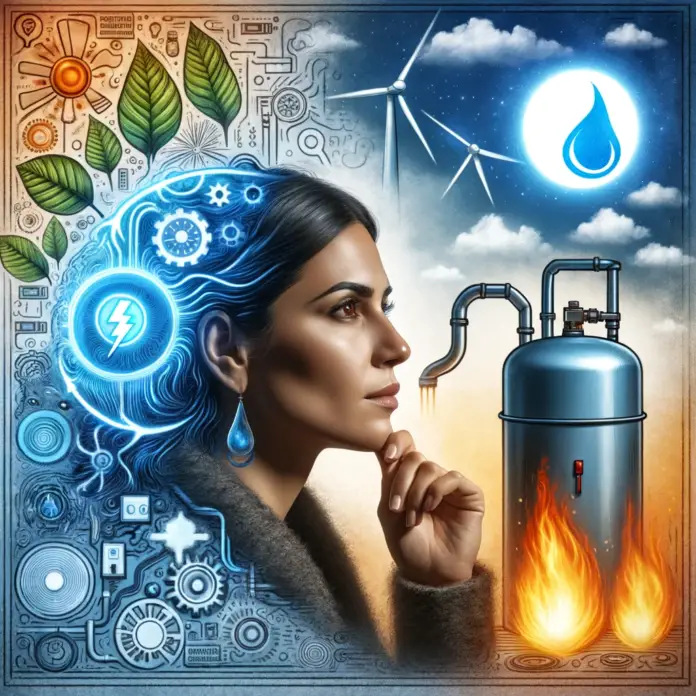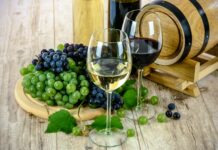
When I first arrived in the U.S. and settled into my new apartment, I was greeted with a revelation that would soon become a daily consideration – the heating and hot water systems were entirely electric. This presented a challenge: managing the high cost of electricity while trying to stay warm during the winter months. This choice made me think about my energy use, the cost, and its environmental impact. It also led me to ponder a question that’s becoming more relevant in our daily lives: what is decarbonization?
While electric heating aligns with decarbonization goals, particularly when powered by renewable energy (why?), the reality was a constant battle to balance comfort with the high cost of electricity. This led me to explore automated energy control systems, but even then, the question lingered: was this the most sustainable option?
Considering the challenges of electric heating, I pondered the alternative: moving to an apartment with gas heating. More affordable and efficient in heat output, gas heating seemed appealing. However, it’s important to remember that natural gas is a fossil fuel, and its use in residential heating contributes to carbon dioxide (CO2) emissions.
This personal heating dilemma is a microcosm of the larger challenge of decarbonization. It’s not just about choosing the most efficient or cost-effective option; it’s about understanding the environmental impact of our choices. Decarbonization involves transitioning away from fossil fuels to reduce carbon emissions, but the path is filled with complexities and trade-offs.
Understanding Carbon Emissions
Before diving into the specifics, let’s set the stage by understanding where carbon emissions come from. The primary sources include fossil fuels, deforestation, industrial processes, and agriculture. Each of these contributes significantly to the global carbon footprint, necessitating innovative solutions for reduction.
What is Decarbonization?
Decarbonization is the process of reducing carbon dioxide emissions to mitigate climate change. It’s a multifaceted approach encompassing renewable energy adoption, energy efficiency, carbon capture, land use, and agriculture changes.

Decarbonization is about reducing greenhouse gas concentrations to mitigate global warming and its impacts. It’s a goal underscored by international agreements like the Paris Agreement adopted at the UN Climate Change Conference (COP21) in Paris, France, on 12 December 2015. This agreement seeks to limit global warming to below 2°C and the temperature increase to 1.5°C above pre-industrial levels.
However, to achieve the goal of keeping global warming below 1.5°C, greenhouse gas emissions must reach their highest point no later than 2025 and then reduce by 43% by the year 2030.
Main Sectors for Decarbonization
Decarbonization is a challenge that is not only present on a daily basis in our homes, but it is a goal in multiple sectors, such as energy production, transportation, industry, and others.

-
Energy Production: This sector is of paramount importance in the realm of decarbonization, marking a crucial shift from reliance on fossil fuels to embracing renewable energy sources. It involves a significant transition towards cleaner, sustainable forms of energy generation such as solar, wind, hydroelectric, and geothermal power. This transformation represents a major stride in reducing carbon emissions and signals a pivotal change in how we harness energy, steering us toward a more environmentally responsible and sustainable future.
-
Transportation: This sector’s main decarbonization goal is to achieve a vital transition in transportation, moving away from traditional gasoline and diesel vehicles towards adopting electric vehicles (EVs). It also involves enhancing public transportation systems to be more efficient and less carbon-intensive. Additionally, the sector focuses on developing and utilizing alternative, sustainable fuels such as hydrogen and biofuels.
-
Industry: Industrial decarbonization involves enhancing energy efficiency through advanced technologies and optimized processes, transitioning to electrification with renewable energy sources, and using sustainable materials with lower environmental impacts. Additionally, it involves implementing carbon capture and storage (CCS) technologies, which are essential for trapping and safely storing CO2 emissions from industrial activities.
-
Buildings and Construction: This sector focuses on improving energy efficiency in both residential and commercial buildings, using sustainable building materials, and integrating smart building technologies. In addition, decarbonizing these systems involves transitioning from fossil fuel-based heating (like natural gas or oil furnaces) to electric or renewable-based systems. This also includes adopting highly efficient electric heat pumps that can provide heating and cooling.
-
Agriculture and Land Use: Implementing sustainable agricultural practices is key to reducing emissions in the agriculture sector. These practices include precision farming, using renewable energy, organic farming methods, and efficient livestock management to minimize methane emissions. Additionally, soil conservation techniques and agroforestry integrate carbon sequestration into farming, further diminishing the sector’s environmental impact.
-
Waste Management: Sustainable waste management encompasses reducing waste generation through sustainable consumption and production practices, enhancing recycling and composting to divert waste from landfills, and capturing methane emissions from landfills, a significant source of greenhouse gases. Additionally, it involves promoting circular economy principles to minimize waste and maximize resource efficiency, and exploring waste-to-energy technologies that convert waste into usable energy, thereby reducing reliance on fossil fuel-based energy sources.
Main Decarbonization Strategies
Decarbonization spans key sectors, each with targeted strategies for reducing carbon emissions. These sector-specific strategies collectively form the backbone of global decarbonization efforts.

-
Transition to Renewable Energy: Adopting renewable energy sources like solar and wind is vital for decarbonization as they generate electricity without emitting greenhouse gases, unlike fossil fuels. This shift reduces the carbon footprint of energy production and combats climate change. Moreover, advancements in renewable technologies have made them increasingly efficient and cost-effective, making them a sustainable and inexhaustible alternative to traditional energy sources.
-
Electrification: Electrification is a pivotal strategy in decarbonization, focusing on replacing systems reliant on fossil fuels with those powered by electricity. This approach is effective when the electricity used is derived from renewable sources like wind or solar power, ensuring that the overall environmental impact is minimized. By transitioning to electrification, we can significantly reduce greenhouse gas emissions, particularly in sectors like transportation and industrial processes, thereby contributing to a cleaner, more sustainable future. In another post, “Electrification and Decarbonization,” I elaborate more on the possible cause-effect relationship between electrification and decarbonization.
-
Thermal Energy Storage: Thermal energy storage is another piece of the puzzle that aims to store heat energy for later use. Efficiency in storing and releasing thermal energy can enhance the viability of renewable energy sources, making them more consistent. This technology is vital in managing the intermittent nature of renewable energy sources, thus supporting the broader decarbonization goal. This is particularly helpful in supplying energy for heating spaces and water and is integral to achieving a sustainable energy balance.
-
Carbon Capture and Storage (CCS): Carbon Capture and Storage (CCS) technology is pivotal in reducing industrial carbon emissions. It involves capturing CO2 directly from industrial sources, such as power plants and factories, and then securely storing it deep underground, often in geological formations. This process prevents significant amounts of CO2 from entering the atmosphere, aiding global efforts to combat climate change.
-
Reforestation and Afforestation: Planting trees and restoring forests are effective natural methods for absorbing CO2 from the atmosphere, playing a crucial role in carbon sequestration. Trees act as carbon sinks, capturing and storing carbon dioxide as they grow, which helps mitigate the impact of greenhouse gas emissions. This process reduces atmospheric CO2 levels, enhances biodiversity, improves air quality, and supports ecosystem resilience.
-
Sustainable Agriculture: Sustainable agriculture’s practices include precision farming, using renewable energy, organic farming methods, and efficient livestock management to minimize methane emissions. Additionally, soil conservation techniques and agroforestry integrate carbon sequestration into farming, further diminishing the sector’s environmental impact.
In addition to these strategies, implementing policies and regulations, including carbon pricing, renewable energy incentives, and energy efficiency standards. Also, new technologies and processes are continuously being developed for more efficient and cost-effective emission reduction.
Final Thoughts
Navigating the complexities of decarbonization in our daily lives underscores that this challenge is not confined to researchers, engineers, companies, or governments alone. It demands the commitment of every individual across the globe. The first step in fostering this commitment is to spread awareness about CO2 emissions, their significance, the sectors involved, and the primary strategies for decarbonization.
In this post, I’ve aimed to demystify the concept of decarbonization. Far from being just a buzzword or a corporate strategy, the push towards decarbonization is a global movement driven by its critical importance and potential impact on humanity’s future. It’s a multifaceted challenge intersecting technology, lifestyle, policy, and environmental stewardship.
Understanding and leveraging the connections between our everyday decisions and the broader decarbonization goal can collectively pave the way for a more sustainable and resilient future. This journey is about making informed choices, embracing innovation, and actively participating in the global effort to shape a better world for future generations.








